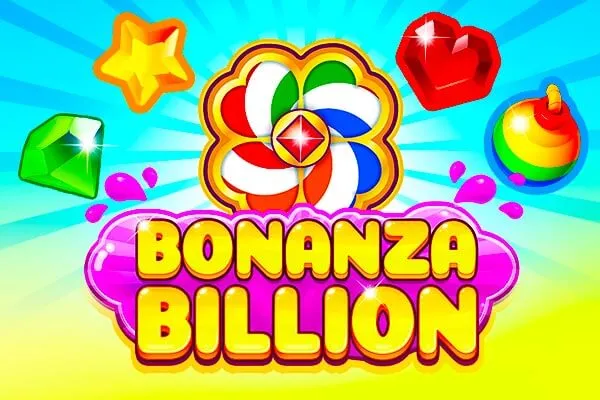Unraveling the Mystery of the 1582 Calendar: A Deep Dive for Indian Readers
The year 1582 is more than just another date in history. It marks a pivotal moment in timekeeping, specifically the introduction of the Gregorian calendar. For many in India, accustomed to a rich tapestry of regional calendars, understanding the significance of the 1582 calendar and its global impact is crucial. This article delves deep into the intricacies of this calendar reform, exploring its origins, its impact, and its relevance to the Indian context.
The Need for Calendar Reform: Why 1582 Matters
For centuries, the Julian calendar, introduced by Julius Caesar, was the standard in Europe. However, the Julian calendar had a flaw: it overestimated the length of the solar year by approximately 11 minutes. While seemingly insignificant, this discrepancy accumulated over time, leading to a noticeable drift between the calendar year and the actual astronomical seasons.
By the 16th century, this drift had become substantial, with the vernal equinox (the start of spring) occurring around March 11 instead of the expected March 21. This posed a problem for the Catholic Church, as the date of Easter is determined based on the vernal equinox. The misaligned calendar threatened to disrupt the established liturgical calendar.
The Gregorian Calendar: A Papal Solution
Pope Gregory XIII commissioned a team of astronomers and mathematicians, led by Christopher Clavius, to devise a solution. The result was the Gregorian calendar, promulgated by a papal bull in February 1582. The Gregorian calendar addressed the Julian calendar's inaccuracies in two key ways:
- Skipping Days: To realign the calendar with the solar year, ten days were skipped. In most adopting countries, the day after October 4, 1582, became October 15, 1582.
- Adjusting Leap Years: The Julian calendar had a leap year every four years. The Gregorian calendar refined this rule by stipulating that only century years divisible by 400 would be leap years. This meant that 1700, 1800, and 1900 were not leap years, but 2000 was.
How the Gregorian Calendar Works
The Gregorian calendar remains the most widely used civil calendar today. Its core principles are:
- A year is divided into 12 months.
- Most months have 30 or 31 days, except for February, which has 28 days in a common year and 29 days in a leap year.
- A leap year occurs every four years, except for century years not divisible by 400.
This system keeps the Gregorian calendar closely aligned with the solar year, with a very small margin of error.
The Adoption of the Gregorian Calendar: A Gradual Process
The adoption of the Gregorian calendar was not immediate or universal. Catholic countries were the first to embrace the change, including Italy, Spain, Portugal, and France. Protestant countries, initially wary of a papal decree, gradually adopted the Gregorian calendar over the following centuries. Great Britain and its colonies (including what would become the United States) adopted it in 1752. Other countries, such as Russia, did not switch until the 20th century.
The 1582 Calendar and India: A Complex Relationship
India presents a unique case when discussing calendar systems. Unlike Europe, India boasts a diverse array of regional calendars, each with its own historical and cultural significance. These calendars are often lunisolar, meaning they are based on both the cycles of the moon and the sun. Some prominent examples include:
- Vikram Samvat: A lunisolar calendar widely used in North India.
- Shaka Samvat: The official civil calendar of India, introduced in 1957.
- Tamil Calendar: A solar calendar used in Tamil Nadu.
- Malayalam Calendar: A solar calendar used in Kerala.
- Bengali Calendar: A solar calendar used in West Bengal and Bangladesh.
The Gregorian calendar's influence in India is primarily felt in administrative, commercial, and international contexts. It is the standard calendar used for government affairs, business transactions, and academic scheduling. However, for religious festivals, agricultural practices, and personal celebrations, many Indians continue to rely on their traditional regional calendars.
Impact on Indian Festivals
The coexistence of the Gregorian calendar and traditional Indian calendars can sometimes lead to complexities in determining festival dates. While the Gregorian calendar provides a fixed date, many Indian festivals are based on the positions of the sun and moon according to traditional calendars. This means that the Gregorian date of a particular festival can vary from year to year.
For example, Diwali, the festival of lights, is celebrated on the new moon night of the Hindu month of Kartik. The Gregorian date of Diwali can range from mid-October to mid-November. Similarly, Holi, the festival of colors, is celebrated on the full moon day of the Hindu month of Phalguna, typically falling in March.
The Shaka Calendar
The Shaka calendar was adopted as the official civil calendar of India in 1957 with the aim of unifying the diverse calendrical practices across the country. While it is used in official government communications, it hasn't replaced the widespread use of regional calendars for cultural and religious purposes. The Shaka calendar is a solar calendar, and its year begins on March 22 (or March 21 in leap years), coinciding with the vernal equinox.
Understanding the Difference: Gregorian vs. Indian Calendars
| Feature | Gregorian Calendar | Indian Calendars (General) |
|---|---|---|
| Type | Solar | Lunisolar or Solar |
| Basis | Solar year | Lunar and/or solar cycles |
| Leap Year | Every 4 years (except century years not divisible by 400) | Complex rules based on lunar and solar alignment |
| Usage | Administrative, commercial, international | Religious, cultural, agricultural |
| Start of Year | January 1 | Varies depending on the region/calendar |
Why is Understanding the 1582 Calendar Important in India?
- Historical Context: Understanding the 1582 calendar provides valuable insight into the history of timekeeping and the global spread of Western scientific advancements.
- Global Communication: In an increasingly interconnected world, familiarity with the Gregorian calendar is essential for effective communication and collaboration with individuals and organizations from other countries.
- Administrative Efficiency: The Gregorian calendar serves as the standard for official government functions and business operations in India.
- Cultural Awareness: Recognizing the interplay between the Gregorian calendar and traditional Indian calendars fosters a deeper appreciation for India's rich cultural heritage and its diverse calendrical practices.
- Academic Research: Researchers in fields such as history, astronomy, and anthropology often need to understand the complexities of different calendar systems to accurately interpret historical records and cultural practices.
Common Questions About the 1582 Calendar
- Why was the Gregorian calendar created? To correct inaccuracies in the Julian calendar and realign the calendar with the solar year.
- How many days were skipped in 1582? Ten days were skipped in most adopting countries.
- When did India adopt the Gregorian calendar? While the Gregorian calendar is widely used in India, it was never formally "adopted" in the same way as in some European countries. Its use gradually increased for administrative and commercial purposes.
- What is the official calendar of India? The Shaka Samvat is the official civil calendar of India.
- How does the Gregorian calendar affect Indian festivals? The Gregorian calendar provides a fixed date, while many Indian festivals are based on lunisolar calendars, leading to variations in the Gregorian date of these festivals each year.
Conclusion: The Enduring Legacy of the 1582 Calendar
The 1582 calendar, or the Gregorian calendar, represents a significant milestone in the history of timekeeping. While India maintains its own rich tapestry of regional calendars, the Gregorian calendar plays a crucial role in administrative, commercial, and international affairs. Understanding the origins, principles, and impact of the 1582 calendar is essential for anyone seeking to navigate the complexities of time and culture in India and beyond. Its impact is undeniable, shaping how we organize our lives and interact with the world on a global scale. Recognizing the interplay between this globally accepted calendar and the diverse traditional systems in India allows for a richer understanding of both scientific progress and cultural heritage.
Related Pages
- Fun88 India: Win Big with Exclusive Betting Bonuses for Cricket Fans!
- "ahara.kar.nic: Your Guide to Karnataka Food Security [2024]"
- Discover SKMU: Top Secrets to Excel at Sido Kanhu Murmu University in India!
- Om Namah Shivaya: Unlock Divine Peace and Spiritual Power for Everyday Life in India!
- RBL Credit Card Customer Care Number: Get Instant 24/7 Support for Indian Users!









